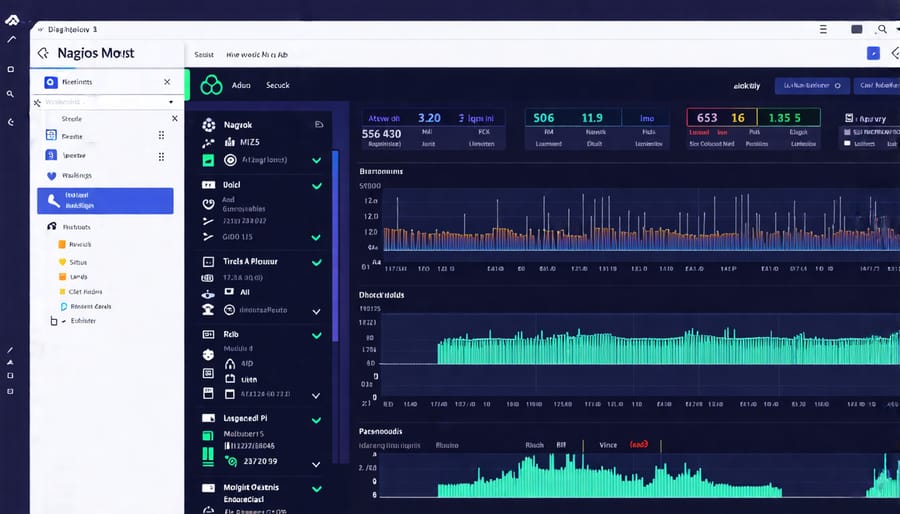Harness the power of the Raspberry Pi to fortify your network security. This credit card-sized computer packs a punch when it comes to protecting your devices and data from cyber threats. With its low cost, flexibility, and vibrant community support, the Raspberry Pi is the perfect tool for tech enthusiasts looking to enhance their network security skills.
Dive into hands-on projects that transform your Raspberry Pi into a network monitoring powerhouse, an intrusion detection system, or even a honeypot to study potential attackers. Follow step-by-step tutorials to configure firewalls, set up VPNs, and implement secure remote access solutions. By taking control of your network security with the Raspberry Pi, you’ll gain practical experience and peace of mind in an increasingly connected world.
Project 1: Building a Pi-Hole DNS Sinkhole

Hardware and Software Requirements
To build a Pi-Hole, you’ll need a Raspberry Pi (any model), a power supply, an Ethernet cable, and a microSD card (at least 8GB). You’ll also need a computer to flash the operating system and configure the Pi-Hole. On the software side, download the latest version of Raspberry Pi OS Lite and the Pi-Hole installer. Optionally, consider using a case to protect your Raspberry Pi and ensure proper ventilation. With these components and software, you’ll be ready to set up your Pi-Hole and start enjoying a cleaner, faster, and more secure browsing experience on your home network.
Step-by-Step Installation Guide
Here’s a step-by-step guide to setting up Pi-Hole on your Raspberry Pi for enhanced network security:
1. Install Raspberry Pi OS on your Pi using the official Raspberry Pi Imager. Connect your Pi to your network via Ethernet or Wi-Fi.
2. Open the terminal and update your system by running:
sudo apt-get update
sudo apt-get upgrade
3. Install Pi-Hole by entering the following command:
curl -sSL https://install.pi-hole.net | bash
4. The installation wizard will guide you through the setup process. Select your preferred settings, such as using your Pi as the DHCP server or keeping your existing one.
5. Choose the block lists you want to use. Pi-Hole comes with a default set, but you can add more later.
6. Set a custom DNS provider or use the default ones provided by Pi-Hole.
7. Once the installation is complete, take note of the IP address and password displayed on the screen. You’ll need these to access the Pi-Hole web interface.
8. Configure your devices to use the Raspberry Pi as their DNS server. You can do this individually on each device or set it up on your router to apply the settings network-wide.
9. Access the Pi-Hole web interface by entering your Pi’s IP address into a web browser. Log in using the password you noted earlier.
10. Customize your Pi-Hole settings, add more block lists, and monitor your network’s activity through the intuitive dashboard.
With Pi-Hole installed on your Raspberry Pi, you’ll enjoy a significant reduction in ads and improved privacy across your entire network. Keep exploring Pi-Hole’s features and settings to fine-tune your setup and maintain a secure, ad-free browsing experience.
Configuration and Customization
To configure Pi-Hole settings, access the web interface at http://pi.hole/admin. From the dashboard, you can monitor network activity, view statistics, and manage block lists. Navigate to the “Settings” tab to customize options like DNS servers, query logging, and web interface settings. To add custom block lists, go to the “Group Management” section and select the “Adlists” tab. Here, you can input URLs for additional block lists to expand Pi-Hole’s ad-blocking capabilities. Be sure to update the gravity list after adding new sources to apply the changes. With these configuration options, you can fine-tune Pi-Hole to best suit your network security needs.

Project 2: Creating a VPN Server
Choosing a VPN Protocol
When choosing a VPN protocol for your Raspberry Pi, consider factors such as security, speed, and compatibility. OpenVPN is a popular choice due to its strong encryption and wide compatibility, but it may be slower than other options. WireGuard is a newer protocol that offers excellent performance and security, making it ideal for bandwidth-intensive tasks. If ease of use is a priority, consider L2TP/IPSec or IKEv2, which are generally easier to set up but may not be as secure. Ultimately, the best protocol will depend on your specific needs and priorities, such as the desire to protect privacy, optimize speed, or ensure compatibility with your devices and network setup.
Configuring the VPN Server
Here are step-by-step instructions for configuring the VPN server on your Raspberry Pi:
1. Install the necessary VPN server software on your Raspberry Pi. For example, if using OpenVPN, run:
“`
sudo apt-get update
sudo apt-get install openvpn
“`
2. Generate the encryption keys and certificates needed to secure the VPN connection. Use the built-in easy-rsa scripts:
“`
make-cadir ~/openvpn-ca
cd ~/openvpn-ca
source vars
./clean-all
./build-ca
./build-key-server server
./build-dh
openvpn –genkey –secret keys/ta.key
“`
3. Create the OpenVPN server configuration file at `/etc/openvpn/server.conf`. Specify the VPN protocol, port, encryption settings, and paths to the generated keys and certificates. A sample configuration:
“`
proto udp
port 1194
dev tun
ca ca.crt
cert server.crt
key server.key
dh dh2048.pem
server 10.8.0.0 255.255.255.0
push “redirect-gateway def1 bypass-dhcp”
push “dhcp-option DNS 208.67.222.222”
push “dhcp-option DNS 208.67.220.220”
keepalive 10 120
tls-auth ta.key 0
cipher AES-256-CBC
persist-key
persist-tun
status openvpn-status.log
verb 3
“`
4. Enable IP forwarding so the Raspberry Pi can route traffic between the VPN and LAN:
“`
sudo nano /etc/sysctl.conf
“`
Uncomment `net.ipv4.ip_forward=1` and save.
5. Configure firewall rules to allow VPN traffic and enable NAT. For example, using `ufw`:
“`
sudo ufw allow 1194/udp
sudo ufw allow from 10.8.0.0/24
sudo nano /etc/ufw/before.rules
“`
Add NAT rules, then restart ufw.
6. Start the OpenVPN server:
“`
sudo systemctl start openvpn@server
“`
7. Generate client configurations containing the keys and settings needed to connect to your VPN. Securely distribute these to your devices.
With the VPN server configured, your Raspberry Pi will encrypt and route traffic, helping protect your network communications.
Project 3: Intrusion Detection with Snort
Installing Snort on Raspberry Pi
To install Snort on your Raspberry Pi, start by updating the package list with ‘sudo apt-get update’. Next, install the required dependencies by running ‘sudo apt-get install -y build-essential libpcap-dev libpcre3-dev libdumbnet-dev bison flex zlib1g-dev liblzma-dev openssl libssl-dev’. Download the latest Snort source code from the official website and extract it. Navigate to the extracted directory and run ‘./configure –enable-sourcefire’ followed by ‘make’ and ‘sudo make install’. Configure Snort by editing the snort.conf file, specifying your network settings and rules. Finally, run Snort with ‘sudo /usr/local/bin/snort -A console -q -u snort -g snort -c /etc/snort/snort.conf -i eth0’ to start monitoring your network for potential threats. With Snort installed, your Raspberry Pi becomes a powerful tool for detecting and alerting you to suspicious activity on your network.
Configuring Snort Rules
To configure Snort rules, start by understanding the basic rule syntax, which consists of the rule header and rule options. The rule header specifies the action, protocol, source and destination IP addresses, and ports. The rule options define the rule’s conditions and alert message.
Open the snort.conf file and locate the rules directory. Create a new .rules file or edit an existing one to add your custom rules. For example, to detect a specific threat like a port scan, create a rule with the following syntax:
alert tcp any any -> $HOME_NET any (msg:"Port Scan Detected"; flags:S; threshold: type both, track by_src, count 5, seconds 60; sid:1000001; rev:1;)
This rule alerts when it detects five or more TCP SYN packets from any source IP to any destination IP within your home network in 60 seconds.
Customize the rule options to fit your specific needs, such as changing the threshold values or adding more conditions. You can also use pre-defined variables like $HTTP_PORTS or $EXTERNAL_NET to simplify your rules.
Once you’ve added your custom rules, save the file and restart Snort for the changes to take effect. Monitor the Snort logs to ensure your rules are triggering alerts as expected and fine-tune them as needed to minimize false positives.
Project 4: Network Monitoring with Nagios

Installing Nagios on Raspberry Pi
To install Nagios on your Raspberry Pi, start by updating your system packages using the command sudo apt update && sudo apt upgrade. Next, install the necessary dependencies, including Apache, PHP, and required libraries. Download the latest version of Nagios Core from the official website and extract the files. Follow the installation guide provided in the Nagios documentation, which involves configuring the build, compiling the source code, and installing the binaries. Set up the web interface by configuring Apache and creating the necessary configuration files. Finally, access the Nagios web interface using your Raspberry Pi’s IP address and configure your monitoring settings. With Nagios installed, you can now monitor your network devices, servers, and services, receiving alerts when issues arise. Nagios provides a powerful and flexible solution for network monitoring, helping you ensure the stability and security of your infrastructure.
Adding Network Devices to Nagios
To add network devices and services to Nagios for monitoring, you’ll need to edit the Nagios configuration files. First, define the network devices you want to monitor in the “hosts.cfg” file, specifying their IP addresses, hostnames, and any parent-child relationships. Next, in the “services.cfg” file, define the services you want to monitor for each host, such as ping, HTTP, SSH, and more. You can also set up notifications to alert you when issues arise. Finally, restart the Nagios service to apply the changes and begin monitoring your network devices and services.
Project 5: Honeypot with Kippo
Setting up a honeypot using Kippo on your Raspberry Pi is an excellent way to detect and study potential attackers. Begin by installing Kippo, an SSH honeypot designed to log brute force attacks and shell interaction by emulating a vulnerable system. Configure Kippo to run on your Raspberry Pi and set up port forwarding to direct SSH traffic to the honeypot. As attackers attempt to gain access, Kippo will log their activities, including entered commands and downloaded files. Analyze these logs to understand the tactics and motivations of potential threats. By studying the behavior of attackers, you can strengthen your network’s defenses and contribute to the cybersecurity community’s understanding of emerging threats. Kippo provides valuable insights into the methods used by malicious actors, allowing you to stay one step ahead in protecting your devices and data.
Conclusion
Incorporating a Raspberry Pi into your network security setup offers numerous benefits, from cost-effective solutions to hands-on learning opportunities. By implementing the projects discussed in this article, you can enhance your network’s security, monitor connected devices, and even study potential attackers. The Raspberry Pi’s versatility and affordability make it an ideal tool for tech enthusiasts, hobbyists, and educators looking to explore the world of network security. Whether you’re a beginner or an experienced user, these projects provide a fun and engaging way to learn about and implement effective security measures. So, grab your Raspberry Pi and start experimenting with these innovative security solutions today!


